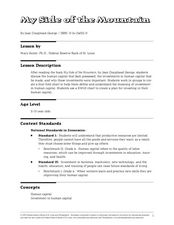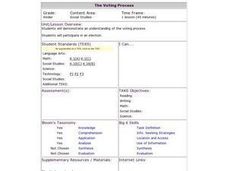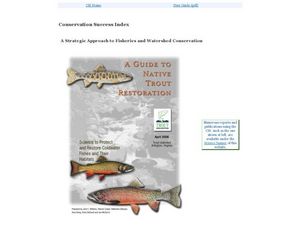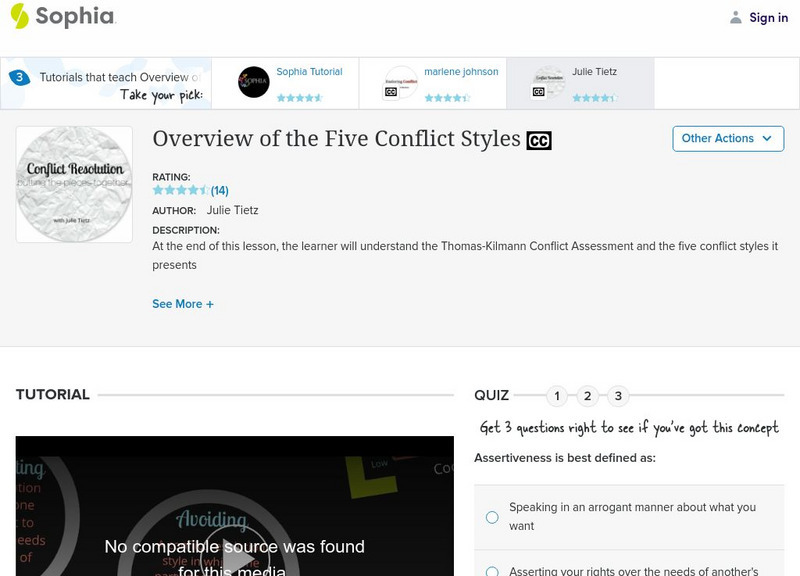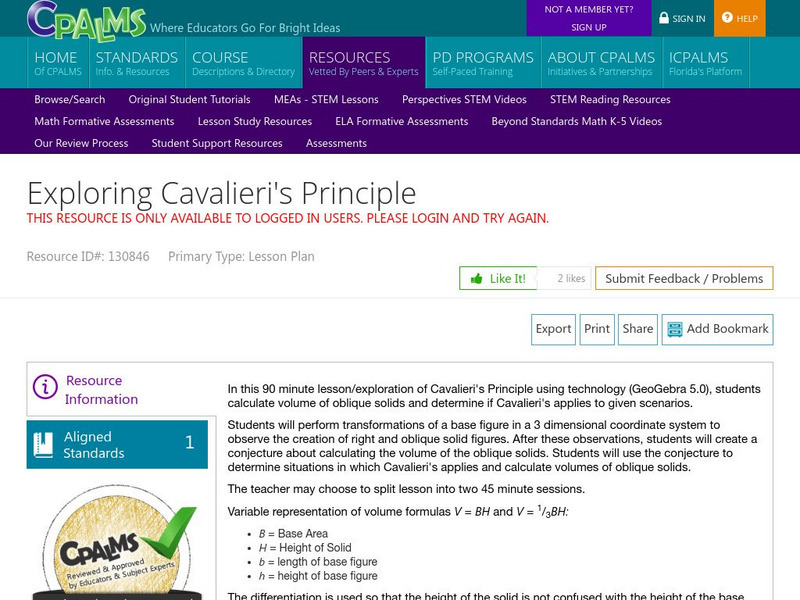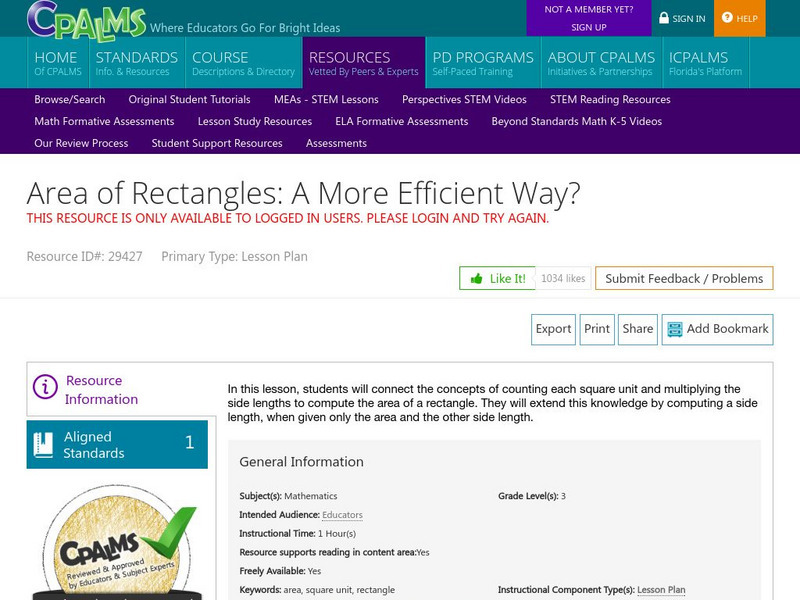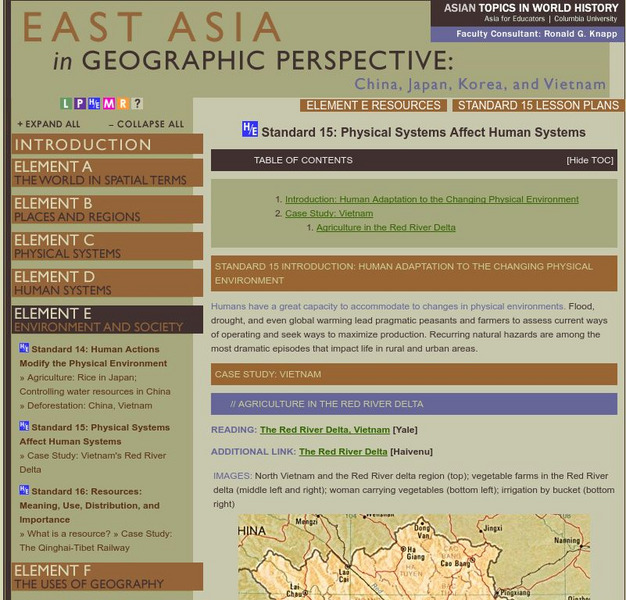Curated OER
Math/Technology: Measuring Objects
Third graders create Powerpoint templates of pictures they have taken. Using both standard and metrric measurement units, they describe what units of measurement they would use for each object. In the computer lab, they work in pairs to...
Curated OER
Double Dipping
Fifth graders determine how many double scoop combinations they can make using 5 different ice cream flavors. Then they use Microsoft Publisher to create a brochure for their ice cream shop.
Curated OER
Tribal Traits
Fourth graders will analyze the similarities and differences between early Texas Indian tribes, compare and contrast two tribes, select to which tribe they would rather belong, and determine their location today.
Curated OER
Count Down
Students are introduced to useing websites as a data source. Using bird population predictions, they test their predictions from various websites. They record, organize and graph the data and share their results with the class.
Curated OER
"My Side of the Mountain"
Learners demonstrate comprehension skills be retelling 6-8 significant events. They identify new vocabulary words and determine the meaning by using context clues.
They contribute to group discussion by sharing at least 1 idea/reflection...
Curated OER
The Voting Process
Students discuss the subject of voting. They are introduced to the question "How do we get what we want?" Explain to students that their parents vote in elections for our leaders, such as our president, for example. Discuss what a...
Curated OER
Gathering Information
Students gather information from a variety of sources on a variety of topics and then prepare a written and oral report to be presented to their groups. They also cover the concept of group dynamics in depth within this lesson as well as...
Curated OER
Meet the Experts, Who are They, Anyway?
Middle schoolers are introduced to the interview as a means of gathering information. Each student interviews a local expert on the subject of their choice. They write interview questions once they complete their interview. Students...
Curated OER
Care For Your Classroom Computer
Students discover the proper way to care for their computers at school. As a class, they use the Internet to view a website on how to care for pets and relate it to their classroom computer. To end the lesson, they are given different...
Curated OER
Evaluating and Identifying Strategies for Safely Using Email and IM
Young scholars listen as the teacher introduces Email and Instant Messaging. They use the Cybersmart curriculum materials to explore junk mail and how to handle email. Students complete two worksheets and the follow up questions from the...
Curated OER
Conservation Success Index
Students read information about trout habitat preservation and visit the various links to learn a fish species and its current habitat range. In this habitat conservation lesson, students read passages about use the Trout Unlimited...
AdLit
Ad lit.org: No Child Left Behind: Determining Assessment Accommodations
Assessment accommodations help people with learning disabilities display their skills accurately on examinations. Teachers, learn how to test the true knowledge of your students. Don't test their ability to write quickly if you want to...
AdLit
Ad lit.org: Understanding Assessment Options for Idea Eligible Students
The No Child Left Behind law requires each school test students in Reading/Language Arts & Math each year in grades 3-8, and at least once more in grades 10-12. In some cases, children eligible for Individuals with Disabilities...
Sophia Learning
Sophia: Overview of 5 Conflict Styles: Lesson 1
At the end of this lesson, the learner will understand the Thomas-Kilmann Conflict Assessment and the five conflict styles it presents. It is 1 of 3 in the series titled "Overview of 5 Conflict Styles."
CPALMS
Cpalms: Building Graduation Caps
[Free Registration/Login Required] In this lesson, students build geometric models of graduation caps using stiff paper. The activity requires the application of skills in finding surface area, understanding similarity, knowing the...
CPALMS
Cpalms: Five Little Monkeys: Comparing and Contrasting
[Free Registration/Login Required] Five little monkeys sitting on a bed or sitting in a tree? In this close reading lesson, students will compare and contrast the actions of the characters in two of Eileen Christelow's beloved books,...
CPALMS
Cpalms: Using Arrays to Model the Distributive Property
[Free Registration/Login Required] Students are presented with a rectangular area model and asked to write an equation that represents the distributive property. Detailed lesson plan provided, along with assessment methods,...
CPALMS
Cpalms: Exploring Cavalieri's Principle
[Free Registration/Login Required] In this lesson, students use the geometry program GeoGebra to explore Cavalieri's Principle, specifically to investigate whether it applies when calculating the volume of oblique solids. Lesson includes...
CPALMS
Cpalms: Area of Rectangles: A More Efficient Way?
[Free Registration/Login Required] In this lesson, students will connect the concepts of counting each square unit and multiplying the side lengths to compute the area of a rectangle. They will extend this knowledge by computing a side...
Columbia University
Columbia University: East Asia in Geographic Perspective
Humans have a great capacity to accommodate to changes in physical environments. Flood, drought, and even global warming lead pragmatic peasants and farmers to assess current ways of operating and seek ways to maximize production....




